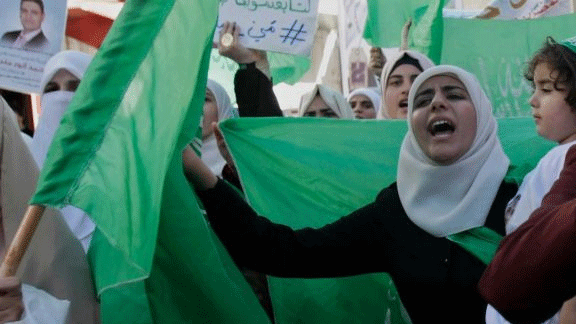Bloodshed at Nakba

Two Palestinian teenagers were shot dead by Israeli occupation forces on Thursday 15 May, as they participated in a protest rally marking the 66th anniversary of the Nakba (the “catastrophe”) and in solidarity with Palestinian political prisoners outside Ofer Prison in the Occupied West Bank.
The teenagers, 17-year-old Muhammad Audah Abu al-Thahir and 15-year-old Nadim Siyam Nuwarah, were shot with live ammunition in the chest. Twenty other protesters were also injured.
In response to the deaths, Amnesty International released a statement saying: “Israeli forces have repeatedly resorted to extreme violence to respond to Palestinian protests against Israel’s occupation, discriminatory policies, confiscation of land and construction of unlawful settlements.”
In February, Amnesty released a report, Trigger Happy: Israel’s excessive use of force in the West Bank, which documented the repeated use of excessive force and unlawful killing of dozens of Palestinian civilians, including children.
The report noted that in 2013, Israel had killed 22 Palestinian civilians. Al-Thahir and Nuwarah’s deaths bring the number of Palestinians killed by Israeli Occupation Forces since July 2013 to more than 60.
Thousands of Palestinians joined a funeral march and protest for the slain youths. Israeli occupation forces opened fire on the funeral, injuring 12 people. Eleven were hit by rubber-coated steel bullets, while one was hit with a high velocity teargas grenade.
The annual Nakba protest commemorates the 1948 destruction and dispossession of Palestinian society by Zionist terror militias, who would later form the misnamed Israeli Defence Forces.
Nearly 1 million Palestinians were forcibly expelled from their homeland; more than 500 Palestinian villages and towns were depopulated and destroyed.
More than 750,000 Palestinians fled to neighbouring Arab countries, while more than 150,000 Palestinians became internally displaced refugees inside the newly created Israeli state.
In a 2004 interview with the Israeli Haaretz newspaper, Israeli historian Benny Morris explained: “In the months of April-May 1948, units of the [Zionist] Haganah were given operational orders that stated explicitly that they were to uproot the villagers, expel them and destroy the villages themselves.
“That was the situation. That is what Zionism faced. A Jewish state would not have come into being without the uprooting of 700,000 Palestinians. Therefore it was necessary to uproot them. There was no choice but to expel that population.”
The protest also stood in solidarity with 125 Palestinian political prisoners held without trial under Israel’s “Administrative Detention” regime. They have been on hunger strike for three weeks.
According to Palestinian prisoner rights organisation Addameer, the hunger strike, which began on 24 April, “can be traced back to May 2012 when an agreement was reached between the Israeli Prison Service and representatives of the prisoners, which brought an end to a mass hunger strike involving approximately 2,000 political prisoners.
“As part of this agreement Israel agreed to limit its use of administrative detention to only exceptional circumstances. However, since then Israel has reneged on the agreement and has continued to use administrative detention on a systematic basis, leaving the detainees with little choice but to launch a fresh strike.”